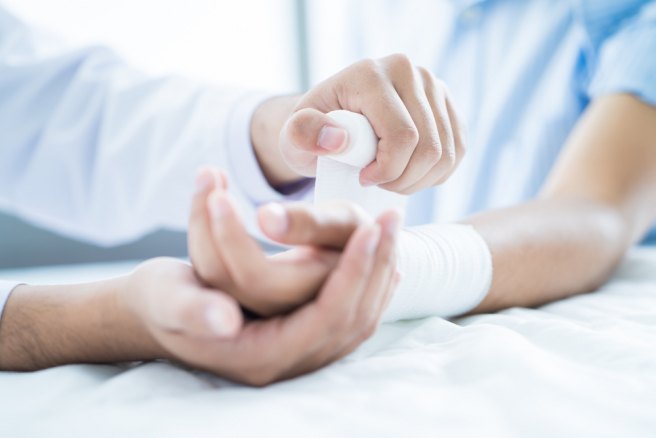New surgical glue seals wounds in 60 seconds

When a person is fatally wounded in a car accident, it is of utmost importance to keep the person stable till they receive medical attention. Now researchers at the University of Sydney have taken a huge step forward in this area by developing an adhesive surgical glue.
Biomedical engineers from Sydney and the United States collaborated and developed a highly elastic and adhesive surgical glue. This miracle sealant, MeTro, is a unique combination of the natural elastic protein technologies and light-sensitive molecules. This combination is further stabilized by curing it with a crosslinking treatment so that the sealant is able to bond and interlock with structures on the tissue surface. This potentially life-saving glue quickly seals wounds without staples or sutures.
Ideal for sealing wounds in body tissues such as heart, lungs, and arteries, MeTro is also perfect for internal wounds in hard-to-reach areas. It sets in 60 seconds and can be modified to last from a few hours to months depending on how much time the wound needs to heal. The lead author of the study, Assistant Professor Nasim Annabi from the Department of Chemical Engineering at Northeastern University said, “The beauty of the MeTro formulation is that, as soon as it comes in contact with tissue surfaces, it solidifies into a gel-like phase without running away.” MeTro is stable till the time the wounds heals and then it degrades without any signs of toxicity.
The sealant that could transform how surgeries are performed has successfully sealed incisions in the arteries and lungs of rodents and the lungs of pigs and the next step would be clinical testing.
Source:
Nasim Annabi, Yi-Nan Zhang, Alexander Assmann, Ehsan Shirzaei Sani, George Cheng, Antonio D. Lassaletta, Andrea Vegh, Bijan Dehghani, Guillermo U. Ruiz-Esparza, Xichi Wang, Sidhu Gangadharan, Anthony S. Weiss, Ali Khademhosseini.
Engineering a highly elastic human protein–based sealant for surgical applications.
Science Translational Medicine, DOI: 10.1126/scitranslmed.aai7466
Image courtesy: Pexels


